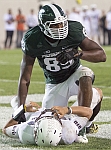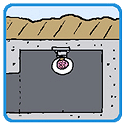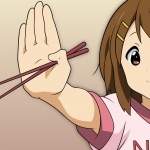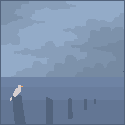|
Hey all, I'm going for a History MA and in the big leagues now. I'm doing a historiography on how perspectives of the two main armies in WWII changed as time went on and the Russian archives released. My bibliography so far is: Alan Clark: Barbarossa. David Glantz's Stalingrad Volume 1. Michael K Jone:' How the Red Army Triumphed Heinz Guderian: Panzer Leader Max Hastings: Inferno Cornelius Ryan: The Last Battle I'm ordering Chuikov's "Battle of Stalingrad" Glantz's Volume 2 for the Stalingrad series and Rise and Fall of the Third Reich by William Shirer Any suggestion on other works to include? I'm thinking Manstein and Halder's accounts, but I'm wondering if "Survivors of Stalingrad" by Reinhold Busch or maybe Liddell's books can help out, too. Books or primary source thoughts would be extremely helpful.
|
|
|
|

|
| # ? May 17, 2024 23:03 |
|
Fangz posted:What was the rationale for that design? I mean nowadays the dreadnought seems terribly obvious. There was an idea that the way ships would fight was to disable the enemy with a hail of smaller caliber fire then close to short range and sink them with high calibre guns. This didn't go away for a very long time, really until the Japanese showed the Russians up at tshushima with their higher calibre guns. A huge argument raged through the letters page of the Times during Fishers royal naval design reforms about it, after all ships had relied on high numbers of guns for centuries beforehand and people just didn't quite get the advantages of all big gun for a while.
|
|
|
|
HEY GAL posted:hapsburgs and popes traditionally bury their organs seperately. in the case of the popes, this is done in small jars. More proof that Christianity is actually just that stupid Egyptian sun god religion.
|
|
|
|
OwlFancier posted:Well they were built only a few decades after the actual ironclads were, so the design follows on quite rationally for the same reason. Sloped armour helps deflect rounds and you're never going to get anywhere fast, so you might as well be able to take some hits once you do get there. Casemate guns are fine as long as you're in the battle line and sailing across your target (you are doing that, aren't you?) and are easier to mount that cross-deck turrets, especially with the aforementioned sloped armour. First off, casemates giving way to turrets isn't about cross deck fire, centerline mounts for secondaries in turrets were pretty rare, it's more a concern with the casemates being incredibly wet since they're below the deck, and not actually being worth that much in a fight at top speed. Meanwhile turrets can have better magazine and loading arrangements and even be dual purpose. Next, for quite a while the limit to range on ship guns wasn't ballistic, it was being able to hit. All of a sudden they went from shooting when they thought they were pointed the right way to a centralized director giving the enemy range and the guns being fired when they were pointed the right direction and elevation, and that made ranges increase hugely. The armor on pre-dreads is pretty thick for a blanket assumption of you're hosed as well. Also the yanks have a pretty decent claim that the turbine engine isn't an essential point of a Dreadnought, but a tradeoff for better speed against range (at least at the start). The designs with a ton of tumblehome like that are French. The problem with those is in large part they lend to unstable ships, and the angling becomes progressively less useful as ranges start increasing. The later designs when sloped armor starts making a comeback actually slope outwards as the armor goes upwards because that way a more plunging trajectory increases rather than decreases the angle. xthetenth fucked around with this message at 06:46 on Sep 18, 2016 |
|
|
|
I've always been under the impression that the primary claimed benefit of pronounced tumblehome designs was stability and seakeeping. The idea behind this is that, by making the upper decks narrower, you make them lighter, netting you (1) smaller moments on the roll and (2) higher freeboard for a given weight. The problem is this all falls apart when the ship takes damage. When a ship lists to one side, there is more ship displacing more water on that side and less ship displacing less water on the other side. This creates a force tending to push the ship back upright (the righting moment). With a conventional more or less vertical hull side, the amount of ship submerged on the lower side increases more the more the list increases; with a pronounced tumblehome, the amount of ship submerged increases less as the list increases, meaning the righting moment is much weaker and the ship is more susceptible to capsizing. Other than that, I basically second everything xthetenth said and would add that I object to the implication that dreadnoughts sacrificed or significantly reduced protection relative to pre-dreadnoughts and that battlecruiser design was chiefly governed by naval treaties (only a handful of ships commonly described as battlecruisers—the Dunkerques, the Alaskas—were designed after the Washington Naval Treaty, and these were only distantly related to Fisher's babies).
|
|
|
|
|
A while back, I mentioned that the US military in WW2 had drawn up plans to deploy chemical weapons en masse against the Japanese Home Islands - the American chemical arsenal being the largest and most sophisticated in the world. It was justifiably pointed out that the article about it I dug up was from a less-than-good source, but I found another article about it from the US Naval Institute as well:quote:During the summer of 1945, as millions of U.S. servicemen planned for two massive invasions of Japan and several thousand others were engaged in the Manhattan Project to develop the atomic bomb, a handful of Army officers had another plan to end the war.
|
|
|
|
Imagine Korea if gas had been on the table.
|
|
|
|
Chump Farts posted:Hey all, I'm going for a History MA and in the big leagues now. I'm doing a historiography on how perspectives of the two main armies in WWII changed as time went on and the Russian archives released. My bibliography so far is: You're going to want some bartov on that list. He's really important to how thinking about war crimes out easy changed. At least do Eastern Front 1941 - 1945: German Troops and the barbarization of warfare. Pick up Hitlers Army: Soldiers Nazis and War in the Third Reich if you have time although it has a bit of s broader scope. Still a shitload of eastern front as that's where most of the Wehrmacht did most of the fighting. There is also a history grad student thread in the academia sub forum.
|
|
|
|
OwlFancier posted:I don't entirely know either, wikipedia isn't very clear which model it's talking about at any given time and the source it links to doesn't work. The English language Wiki entry on the T-34 is garbage. You're better off using any other language + Google translate.
|
|
|
|
Chump Farts posted:Hey all, I'm going for a History MA and in the big leagues now. I'm doing a historiography on how perspectives of the two main armies in WWII changed as time went on and the Russian archives released. My bibliography so far is: I have a bunch of primary documents translated here. They're mostly rivet-counter oriented, but you can probably get some good stuff from certain tags.
|
|
|
|
Drawing up plans to gas five million civilians seems like a bit of a moment.
|
|
|
|
That was sort of the second world war in a nutshell for most parties concerned.
|
|
|
|
Ensign Expendable posted:The English language Wiki entry on the T-34 is garbage. You're better off using any other language + Google translate. Anything related to German history is the same way. So many idiot revision wars in the English version. I gave up five years ago when I stuck something in and a sperg lord who had staked the article out as his e=domain reverted it. Reason? He used online sources which were more widely available and thus superior to the archival stuff I was reading. Cyrano4747 fucked around with this message at 18:42 on Sep 18, 2016 |
|
|
|
I tried to alter the entry for the KV tank once. Not anything important, just their claim that the KV-6 had a flamethrower. It didn't, and I even added a goddamn blueprint as a source, but within minutes the change was reverted and the account was banned.
|
|
|
|
xthetenth posted:First off, casemates giving way to turrets isn't about cross deck fire, centerline mounts for secondaries in turrets were pretty rare, it's more a concern with the casemates being incredibly wet since they're below the deck, and not actually being worth that much in a fight at top speed. Meanwhile turrets can have better magazine and loading arrangements and even be dual purpose. Next, for quite a while the limit to range on ship guns wasn't ballistic, it was being able to hit. All of a sudden they went from shooting when they thought they were pointed the right way to a centralized director giving the enemy range and the guns being fired when they were pointed the right direction and elevation, and that made ranges increase hugely. The armor on pre-dreads is pretty thick for a blanket assumption of you're hosed as well. I would argue that centerline turrets are necessary to build an efficient big-gun ship because otherwise you're having to mount twice as many guns as you want to fire in combat. A turret-heavy layout lets you use all of your gun-tonnage in a fight, whereas casemate guns can obviously only fire on the side they're located on. While turrets need extra weight in terms of the turret mechanism you can still get your two or three guns per turret into a weight you would normally spend on six guns, which means your three turreted guns can be larger. You probably won't be taking advantage of the ability to fire to both sides of the ship at the same time with a turret but the ability to bring the majority of the ship's armament to bear at once is a significant point when considering what you can equip the ship with. Ensign Expendable posted:The English language Wiki entry on the T-34 is garbage. You're better off using any other language + Google translate. It does seem to have a weird "this tank was hugely successful but here's this massive list of reasons why it was poo poo" kind of bent to it. OwlFancier fucked around with this message at 17:26 on Sep 18, 2016 |
|
|
|
OwlFancier posted:That was sort of the second world war in a nutshell for most parties concerned. Also, it was the Japanese Home Islands. Absent a spontaneous Japanese surrender, there simply weren't any good options there.
|
|
|
|
I stopped trusting Wikipedia after I found a behind the scenes nationalist edit war on a couple of articles about glass beads.
|
|
|
|
Koramei posted:I stopped trusting Wikipedia after I found a behind the scenes nationalist edit war on a couple of articles about glass beads. ....Czechs?
|
|
|
|
OwlFancier posted:It does seem to have a weird "this tank was hugely successful but here's this massive list of reasons why it was poo poo" kind of bent to it. This is literally all soviet tanks to 95% of amateur milhist nerds.
|
|
|
|
spectralent posted:This is literally all soviet tanks to 95% of amateur milhist nerds. And most American tanks. Tommy Cookers, anyone?
|
|
|
|
SeanBeansShako posted:Ironclad and pre-dreadnaughts designs look amazing and are wild stuff before they buttoned down with the efficiency. Like 18th to 19th century uniforms. I'm open to the idea that 18th to 19th century uniforms changed for more than fashion related reasons, but what difference did it make? And after thinking about it for a while, I can't help thinking modern people dress really bizarrely. Like a thin tshirt on top and a thick, rugged set of jeans. That's like wearing a teddy on top and plate armor on the bottom.
|
|
|
|
Cythereal posted:And most American tanks. Tommy Cookers, anyone? Yeah but that's WW2. Soviet stuff in the cold war still gets the "This tank is great but also terrible for reasons" treatment, whereas US tanks in the cold war are all overwhelming tools of tactical domination.
|
|
|
Monocled Falcon posted:I'm open to the idea that 18th to 19th century uniforms changed for more than fashion related reasons, but what difference did it make? Okay so I am a gun powder era soldier late 1600's going into the next century. We've decided already some identification is certainly useful for our allies to not shoot us through the gun powder and along with our music and standards our commanding officers behind us can give our orders and keep track of us mostly what is next? Well a turn of the 18th century uniform is essentially a huge sort of pseudo greatcoat with massive sleeves and coat tails for the soldiers to keep warm because it is cold outside and we're going to fight this war until october if we have too! and well, our regimental commander did pay for all our uniforms and he doesn't care what you think that fancy pants floppy hat will never go out of fashion. I'm just happy to not freeze to death sleeping in a field now. Oh and the new hat design keeps my head AND my shoulders dry now. But as time passes, my equipment me and my soldier bros are carrying is either becoming obsolete or evolving due to changes in industry, tactics and what officers and gentlemen have observed and seen for themselves during their time in the wars. We do like the looks and influences of other cultures and countries lets ah, borrow them for a bit now. Man some of our dudes are super pumped and adding lots of lace and poo poo to our gear. At least now we can tell sort of who's the elites and who are the main schmucks or just stand and take fire now. Now I got all this leather gear to carry stuff I can easily sling a greatcoat in my pack or tie awkwardly around my torso to protect me for a saber blow or two! but drat sure is harder marching lets just cut some of that uniform down bring those tails and sleeves in a little. Wait what the gently caress? gaiters? stocks? my poor knees and neck! well, at least now some of my bros can march around and move lightly. Some of them are wearing green and shooting with weird hunting rifles. Whatever gets them off I guess. Oh cool, we got a Mitre for that act of bravery, now we can throw grenades without blowing ourselves up! We're grenadiers. Nope, not anymore! we're now merged with some other Fusilier jerks because of both the government and army now takes care of the regiment and needs to save money. We've got these fancy new felt hats with plumes that make us look taller. Also, gaiters and stocks are gone and we've got decent footwear at last. At least it isn't murder on my knees. I sure will miss powdering my hair. We've got trousers now, those are nice anything that lasts longer on campaign and keeps my warmer is a plus. The dye keeps fading though on my fancy factory produced coatee now. Welp the Napoleonic Wars are over, I guess we've got nothing better to do that garrison duty, parade and the occasional bit of Imperialism/Colonial care taking. OH gently caress WHY IS MY HAT IS TALL. WHY CAN'T I BREATH THIS SHELL JACKET IS CUTTING OFF MY CIRCULATION. Oh well that was weird, we've just fought a proper war again and turns out the older style stuff we wore on fatigues is more practical again. Also, looks like the French got their poo poo pushed in so our fancy kepi are all now weird helmets made of cork with spikes on the top. Somebody will lose an eye over this. Also, these days it seems everyone is wearing different shades of indigo blue or navy. Except for some weirdo hold outs. I guess this new fangled smokeless powder will change things. It is harder to tell who is who these days I miss the big whacky hat era. Oh hey we're wearing shades of green, grey and brown now. I don't laid as much but I am sure happy I am harder to hit now with these new bolt action rifles. What the gently caress is a machine gu- SeanBeansShako fucked around with this message at 18:40 on Sep 18, 2016 |
|
|
|
|
I do love whoever decided that what the enemy really needed was seeing the loving pope coming to stab the poo poo out of them with a bayonet after blowing them the gently caress up.
|
|
|
OwlFancier posted:I do love whoever decided that what the enemy really needed was seeing the loving pope coming to stab the poo poo out of them with a bayonet after blowing them the gently caress up. I am curious to know whether the Mitre was just a fancy hats the religions and military institutions adopted or did it come from religion and just sort of spread because it looked cool and didn't get in the way of throwing grenades?
|
|
|
|
|
OwlFancier posted:I would argue that centerline turrets are necessary to build an efficient big-gun ship because otherwise you're having to mount twice as many guns as you want to fire in combat. For secondaries it's very rarely a question between centerline turrets and casemates, it's between turrets on the side and casemates. Seriously, the US considered it on a few battleships, did it on a few cruisers, and the Japanese did it on the Yamato, but at most that was half the secondaries in such mounts and the rest on the sides. Centerline space is valuable, and usually the centerline turrets are up top which means they have a big heavy barbette, they push the (also heavy) conning tower up higher, and the turret itself costs a bunch of topweight.
|
|
|
|
Re: casemates, don't forget about internal separation and damage control. Most of the WWI-era casemate secondary armament fits had limited internal separation, so hits to that area could burn out multiple weapons at once very easily. Solving that problem with more subdivision complicates ammo supply arrangements, so you need to provide ammunition handling facilities for each weapon station. At that point you've got many of the disadvantages of a turret without the advantages. You might as well go all the way.
|
|
|
OwlFancier posted:I would argue that centerline turrets are necessary to build an efficient big-gun ship because otherwise you're having to mount twice as many guns as you want to fire in combat. You have causality backwards here: The desire for an all-big-gun armament leads to an all-turret main battery, not the other way around. And if you're trying to say that centerline turrets are a key element of dreadnought design, then I have to question whether you've actually looked at many WWI-era dreadnoughts like, oh, I don't know, Dreadnought. A whole bunch of 'em have wacko wing turrets in a bid for axial fire.
|
|
|
|
|
xthetenth posted:For secondaries it's very rarely a question between centerline turrets and casemates, it's between turrets on the side and casemates. Seriously, the US considered it on a few battleships, did it on a few cruisers, and the Japanese did it on the Yamato, but at most that was half the secondaries in such mounts and the rest on the sides. Centerline space is valuable, and usually the centerline turrets are up top which means they have a big heavy barbette, they push the (also heavy) conning tower up higher, and the turret itself costs a bunch of topweight. Well, yes, that's why all big-gun dreadnoughts stopped mounting as many secondary guns in favor of spending that weight on primary armament. The HMS Dreadnought carried 5 twin 12 inch turrets, three on the centerline and two either side, and a bunch of 3 inch guns mounted all over for use against smaller targets (though you would want to avoid putting your dreadnought in direct combat with destroyers, good way to get it sunk). In contrast with say, the Mikasa which carried two twin 12 centerline turrets, and 14 six inch guns mounted along the side, as well as a bunch of smaller guns. Dreadnoughts marked the transition away from large amounts of smaller guns into putting the bulk of the ship's weight and space into supporting large centerline guns and having as much of the armament in use in an engagement as possible. I wouldn't expect to find any ships mounting secondary guns in centerline turrets because that's a bit of a waste of space, the point was that ships mounted more primary guns and in more centerline turrets to get the most use out of them. Yes they did still use things like wing turrets and there's the Neptune that mounted its wing turrets so that they could fire over the ship and wreck the superstructure in the process but I would absolutely argue that there is a noticeable trend away from side mounted guns and towards central layouts. OwlFancier fucked around with this message at 20:30 on Sep 18, 2016 |
|
|
|
OpenlyEvilJello posted:You have causality backwards here: The desire for an all-big-gun armament leads to an all-turret main battery, not the other way around. And if you're trying to say that centerline turrets are a key element of dreadnought design, then I have to question whether you've actually looked at many WWI-era dreadnoughts like, oh, I don't know, Dreadnought. A whole bunch of 'em have wacko wing turrets in a bid for axial fire. That's a point actually. Centerline turrets come with some real costs on smaller ships. Axial fire was a consideration, but so was the very serious limit to stability that was the downright dinky hulls these early dreadnoughts were on. When the turrets themselves aren't super huge so the structures to put their weight on the keel aren't overly weighty and your centerline is full of machinery and other turrets, the wings start looking like a pretty good place to put guns. Superfiring turrets are also kind of expensive in terms of stability and thus ship to get that stability, and you've only got doubles, so when you can't load any more turrets on the end (too much weight on the ends), you're putting them between the boilers and machinery, and that means piping hot steam past the magazines, warming the powder, which makes the guns shoot a little bit farther and messes with your shot patterns. OwlFancier posted:Well, yes, that's why all big-gun dreadnoughts stopped mounting as many secondary guns in favor of spending that weight on primary armament. Primaries in casemates basically wasn't done for decades at that point, so you might understand why we confused your talk of guns in casemates for talk of secondaries. Ship design is a really iterative process, it's not like the definitive superdread popped fully formed from Jackie Fisher's head. xthetenth fucked around with this message at 20:35 on Sep 18, 2016 |
|
|
|
What I was trying to say was that pre-dreadnought designs had fewer primary guns, and more secondary guns mounted in casemates or in side turrets, post-dreadnought designs did away with that in a large part, and designed the ship around carrying large guns in central turrets and using all of them at once, rather than having one side of the ship not doing anything.
|
|
|
|
I'm sure this one has been discussed to death, but what do the posters in this thread feel was the motivation for the use of the atomic bomb? The grade-school explanation is "to avoid the costs of invasion"; I have been exposed to an alternate explanation that basically suggests that the American generals really badly wanted to be the ones occupying Japan, as opposed to the Russians. I've also heard that US-Japan communications suffered from poor translation. If there's a better post about this somewhere just go ahead and link me.
|
|
|
|
americong posted:I'm sure this one has been discussed to death, but what do the posters in this thread feel was the motivation for the use of the atomic bomb? The old thread explicitly banned this particular subject. It always comes down to fruitless arguing over whether the atomic bomb was justified or not and it never goes anywhere interesting.
|
|
|
|
It was dropped because it was ready. That's really the entire explanation. After spending all that money the idea of somehow not dropping it wasn't on the table.
|
|
|
|
Chump Farts posted:Hey all, I'm going for a History MA and in the big leagues now. I'm doing a historiography on how perspectives of the two main armies in WWII changed as time went on and the Russian archives released. My bibliography so far is: Huh, I did a similar topic for my dissertation. Is 'I'm working on an analyses of the shifting historiography of the Eastern Front' a version of 'do you have stairs in your house' solely for history students/graduates? I can track down the books I used, but honestly I think you kind of have me beat already.
|
|
|
|
Cythereal posted:The old thread explicitly banned this particular subject. It always comes down to fruitless arguing over whether the atomic bomb was justified or not and it never goes anywhere interesting. I can totally see that and I'm sorry in advance if I've made the thread terrible for the next few pages. E: I guess I was asking less of a morality question and more of a "why did it end up happening" question, although it's hard to discuss one and not the other. americong fucked around with this message at 22:54 on Sep 18, 2016 |
|
|
|
americong posted:I can totally see that and I'm sorry in advance if I've made the thread terrible for the next few pages. Cythereal's post a higher up on this page give a nice idea of part of what the alternative would entail.
|
|
|
|
"Centerline turrets are for nerds"- Bizarro Jackie Fisher, May 1918 http://nws-online.proboards.com/thread/449/badnoughts-experiment Polikarpov fucked around with this message at 23:04 on Sep 18, 2016 |
|
|
|
americong posted:I've also heard that US-Japan communications suffered from poor translation. A fun fact you may not know and will hopefully not derail the thread: The Japanese "sneak attack" at Pearl Harbour was an accident. The sap that was meant to be translating the declaration of war took too long and the attack was underway before it was done. Though the content was also something like "Given the issues we have had, we cannot see a way to amicably resolve our differences" which is probably also the least clear way to say "We're going to bomb you now".
|
|
|
|

|
| # ? May 17, 2024 23:03 |
OwlFancier posted:What I was trying to say was that pre-dreadnought designs had fewer primary guns, and more secondary guns mounted in casemates or in side turrets, post-dreadnought designs did away with that in a large part, and designed the ship around carrying large guns in central turrets and using all of them at once, rather than having one side of the ship not doing anything. On the plus side, we have now had a much more in-depth discussion of problems in turn-of-the-century warship design. Polikarpov posted:Centerline turrets are for nerds I loved this guy's work. Such fancy superstructure drawing.
|
|
|
|
































